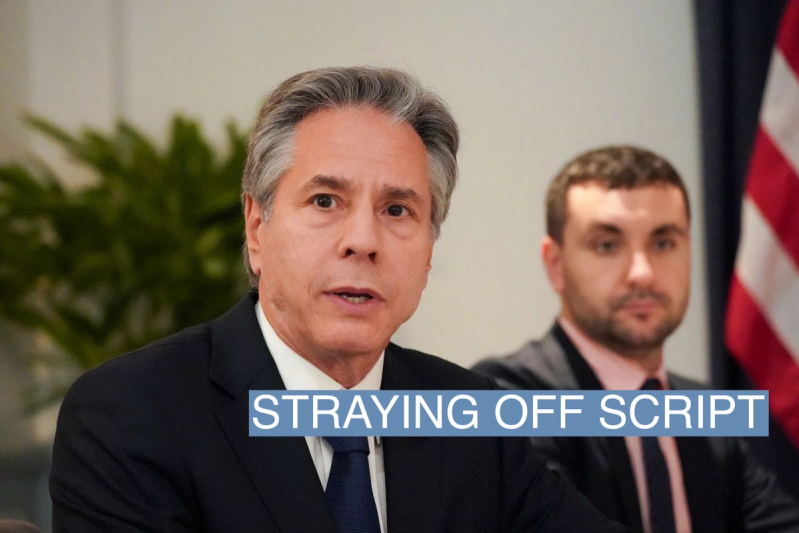The News

The rare protests in China over the weekend raised a sensitive question in Washington: How should U.S. officials respond?
Eager to criticize the Biden administration, Republicans hammered the White House for not using the moment to rebuke Chinese President Xi Jinping directly. Some even called on the administration to threaten sanctions and clamp down on firms used in surveillance activities.
Some Democrats have, like their Republican colleagues, explicitly criticized Xi’s government.
“This has been a brutal policy of repression by the Chinese government,” Sen. Chris Murphy, D-Conn. told Semafor. “There was bound to be a backlash. The Chinese government is trying to spin very hard that this is nothing the world should pay attention to. We’re all trying to understand the serious and gravity of it.”
But others said they see value in limiting conversation about the protests — which have largely been quelled by police — arguing that a vocal response would play into the Chinese government’s hands.
“These are protests that are organically arising from the legitimate concerns of the Chinese people, not protests that we have anything to do with instigating and the more we talk about it and engage with it, the more it is likely that the Chinese government will say to their people, ‘see, this is the result of American instigation,’” Sen. Chris Coons, D-Del. told Semafor.
Senate Intelligence Committee Chairman Mark Warner, D-Va. echoed that sentiment in an interview with Fox News on Wednesday: “The Chinese propaganda machine is great at turning anything they can and manipulating anything they can to say, ‘this genuine protest on the streets of China is somehow driven out of the west and driven by the United States.’ So, I think there is a delicate line that we need to walk particularly in the next couple of days.”
Rep. Adam Smith, D-Wash., who chairs the House Armed Services Committee, told Semafor the U.S. should advocate for the Chinese people having more freedom but, like Warner, suggested a balance needs to be struck.
“We’re trying to limit the degree to which we’re in the business of trying to run other people’s countries,” he said.
There is consensus in Washington for expressing support for the protesters, who took to the streets beginning over the weekend to voice opposition to COVID-19 lockdowns and, in some cases, Xi’s leadership.
The Biden administration has done so carefully by backing peaceful protests and criticizing the COVID-19 policies when asked about the demonstrations.
White House national security spokesman John Kirby on Wednesday characterized the administration’s response as “consistent with past practice, certainly deliberate, thoughtful.”
The one administration official who diverged from the initial rhetoric is Secretary of State Antony Blinken, who suggested in an interview on MSNBC that China’s efforts to suppress the protests were a “sign of weakness.”
Even that relatively mild criticism struck a nerve among Chinese officials.
China Foreign Ministry spokesperson Zhao Lijian told reporters Thursday that Blinken’s remarks were “politically motivated and driven by a hidden agenda” and “meant to drive a wedge and create a false narrative,” according to a transcript of a press briefing from the Chinese embassy.
In this article:
Morgan’s view
The White House is likely weighing many factors when it decides how to respond to these protests, not least among them an effort to manage tensions with China and get dialogues on climate change and military back on track. While Biden has often used tough language toward China when discussing international issues, like America’s relationship to Taiwan, the administration seems to have concluded that weighing in heavily on the country’s volatile internal affairs would be a bridge too far.
Only a dramatic shift in demonstrations could put additional pressure on the administration to coalesce behind a more forceful response. As of now, that seems unlikely to occur. It already appears that China is pulling back its strict lockdown rules that spurred the protests in the first place.
Lawmakers on Capitol Hill, meanwhile, feel less fettered in their rhetoric, and criticizing Biden for being insufficiently tough on China is a convenient way for GOP lawmakers to score political points. On Thursday, a group of 42 Senators released an open letter to the Chinese ambassador recalling the 1989 Tiananmen Square massacre and warning “in the strongest possible terms not to once again undertake a violent crackdown on peaceful Chinese protesters who simply want more freedom.” The signatures were split between 5 Democrats with 37 Republicans.
The dynamic may hint at a tug-of-war to come over American policy toward Beijing—one pitting a somewhat cautious White House against louder, more aggressive China hawks on Capitol Hill, who may only grow more emboldened once Republicans officially take control of the House next year.
Room for Disagreement
While many Democrats argue that caution is necessary to avoid undermining the protests or rocking delicate diplomatic ties, Nayyera Haq, a former Obama administration State Department official, argued earlier this week that the U.S. response to the protests showed that concerns about the economy will usually outweigh those about human rights.
“The tragic reality of modern foreign policy is that atrocities come first, then the official documentation that may trigger international sanctions,” Haq wrote for MSNBC. “Until then, economic concerns about inflation and supply chain issues in the United States will take precedent over the activism in China. And the Biden administration will continue to play it cool in the face of China’s ongoing human rights abuses.”
Kadia Goba contributed.

